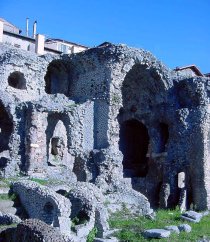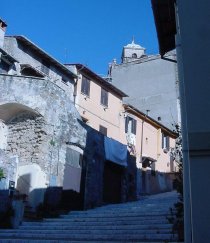When the city was captured, Marius (sheltered in the city) slew himself while the male inhabitants were massacred. Silla repopulated the newly founded town with his veterans and delegating the foundation of the new colony to M. Terentius Varro Lucullus, who was consul in 73 BC. In these years was enlarged the Sanctuary of the Fortuna Primigenia, with an important oracle, so as to include much of the space occupied by the ancient city.
Praeneste in medieval times changed its name and became Palestrina, it was conquered by the Lombards and in the 11th Century it became a possession of the Colonna family.
In 1297 the Colonna family revolted from the pope, but in the following year the town was sacked and destroyed from Pope Boniface VIII. Other sieges and destructions occurred in the XVth century.
In 1572, the town was granted the title of principality, and in 1630 it was sold to the Barberini family who restructured radically the Baronial Palace and built the Church of Saint Rosalia.
The town came to largely obscure the temple, whose monumental remains were revealed as a result of American bombing of German positions in World War II.






